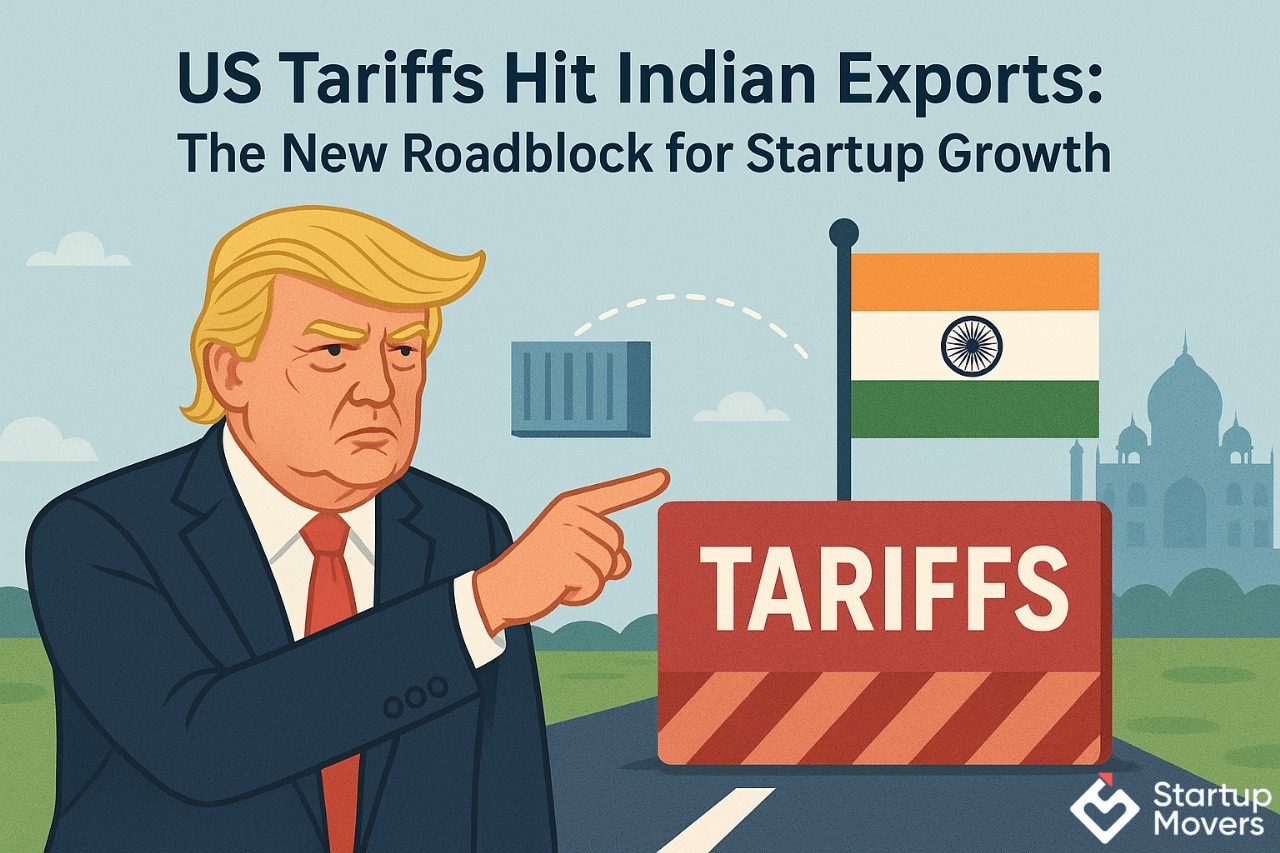Vyapar Acquire Suvit to Boost MSME Digital Compliance




In a significant shift in trade dynamics, the United States has imposed a 50% tariff on Indian imports, marking a pivotal moment in the economic relations between the two nations. This move threatens to disrupt various sectors, particularly impacting Indian startups and the burgeoning Direct-to-Consumer (D2C) industry.
On July 30, 2025, U.S. President Donald Trump announced a 25% tariff on Indian goods, which took effect on August 7, 2025. This decision was based on India's high trade barriers and its continued purchases of Russian military equipment and energy, which the U.S. views as contributing to the ongoing conflict in Ukraine.
Subsequently, on August 6, 2025, President Trump signed an executive order imposing an additional 25% tariff, bringing the total tariff on Indian goods to 50%. This second phase of the tariff is set to take effect 21 days later, on August 27, 2025.
This new tariff builds on earlier actions, including a 26% reciprocal tariff on India announced in April 2025, which was temporarily suspended. The latest 50% tariff, making it 20% higher than China’s tariff and 31% higher than Pakistan’s, signifies an escalation in the U.S.-India trade tensions, highlighting the intersection of economic policies and global politics.
According to the latest data from the U.S. Trade Representative's Office, the total trade between the United States and India reached $212.3 billion in 2024, reflecting a significant increase from the previous year. Here’s a breakdown of the trade dynamics:
Several sectors are expected to be adversely affected by the new tariffs:
Certain goods, including minerals and energy resources used in pharmaceuticals and electronics, are exempted as per Annex II of U.S. Executive Order 14257.
The recent U.S. tariffs have created significant challenges for Indian D2C (Direct-to-Consumer) brands. These tariffs, set to increase the cost of Indian products in the U.S., require brands to rethink their strategies. Here’s a breakdown of how these changes affect D2C businesses and what they can do about it:
Tariffs raise the cost of products, which means D2C brands selling to the U.S. will either face lower margins or have to increase prices. Both options can harm customer acquisition, especially when competing on price.
Increasing prices to cover tariffs can hurt sales, particularly for brands that rely on being cost-competitive. However, brands with strong differentiation, like a compelling story, quality products, and community engagement, can pass on these costs more easily without losing customers.
To avoid tariffs, many brands are looking at:
These solutions require investment in time, money, and new compliance procedures.
Dealing with the complexity of tariffs, import codes, certificates of origin, and exemptions can be tricky, especially for smaller teams without the necessary expertise.
Many D2C brands will diversify their markets by selling in regions like the EU, the Middle East, and India. They may also explore marketplaces that can handle the complexity of taxes and tariffs or partner with local distributors to bypass import duties.
Here’s a simple 30/60/90 day checklist for D2C founders:
By taking these steps, D2C brands can navigate the challenges of rising tariffs, maintain their competitiveness, and continue to grow.
The imposition of a 50% tariff by the United States represents a significant challenge for India, especially for its startups and the D2C industry. While the Indian government is exploring strategies to mitigate the impact, including diversifying trade partnerships and enhancing domestic consumption, the road ahead remains uncertain.
The outcome of this trade dispute will likely shape the future trajectory of India-U.S. economic relations and the growth prospects of Indian startups.
Share Article:
Frequently Asked Questions (FAQs)
What are the new U.S. tariffs on Indian goods?
The United States has imposed a 50% tariff on Indian goods, effective from August 7, 2025.
The tariff includes an initial 25% increase, with an additional 25% to be implemented in three weeks. This move impacts several industries, including electronics, textiles, pharmaceuticals, and gems & jewelry.
How will the U.S. tariffs impact India-U.S. trade relations?
The new tariffs have strained trade relations between India and the U.S. While India seeks to protect its export sectors, the U.S. justifies the tariffs citing national security concerns over India's continued purchases of Russian oil.
What steps can Indian exporters take to mitigate the impact of U.S. tariffs?
Indian exporters are advised to:
How do the U.S. tariffs affect Indian D2C (Direct-to-Consumer) brands?
Indian D2C brands are facing challenges due to increased costs from tariffs. This may lead to reduced margins or higher prices, impacting customer acquisition and competitiveness in the U.S. market.

